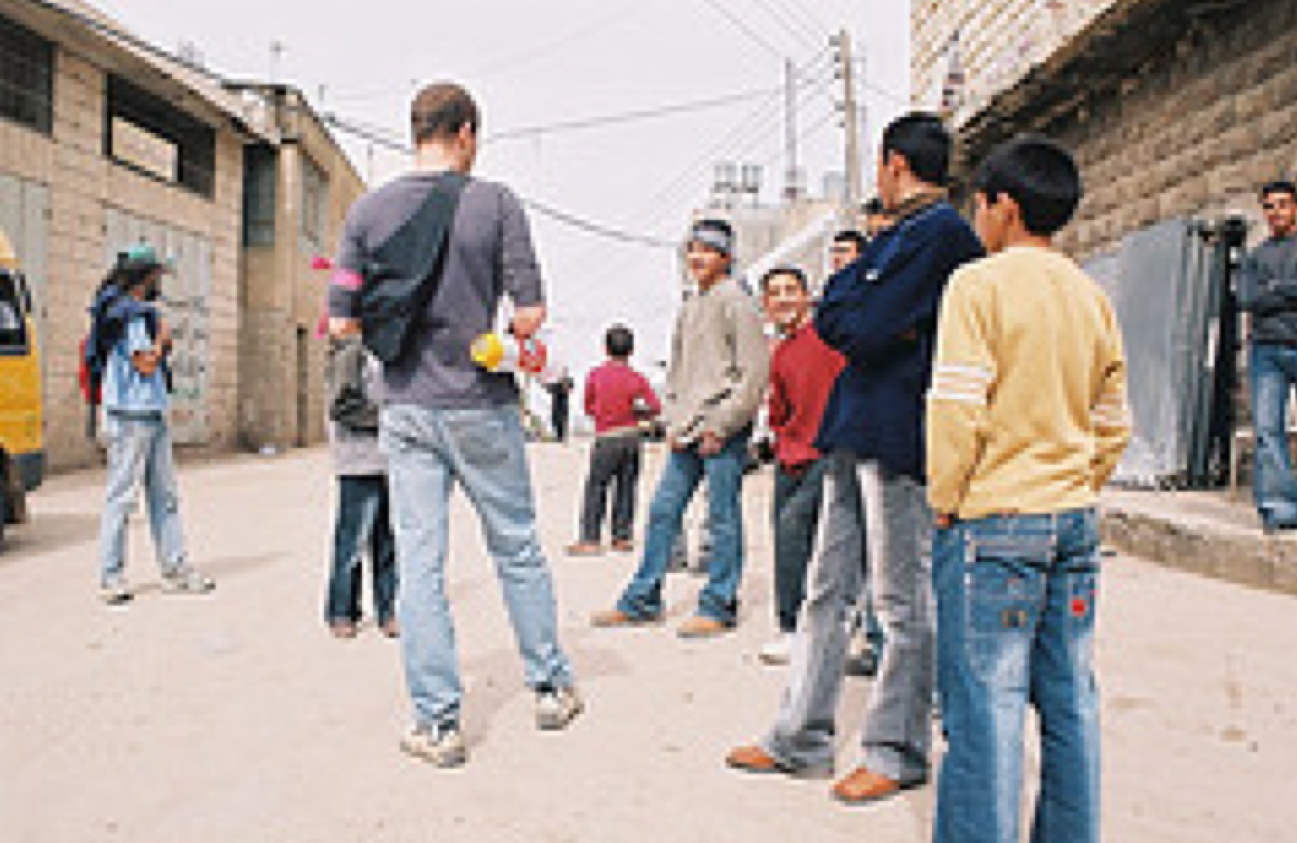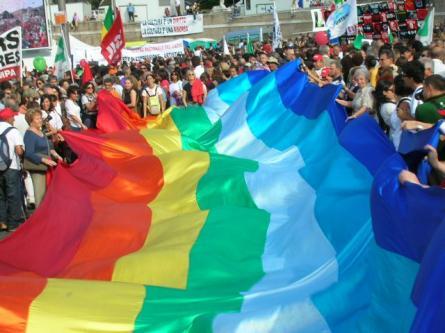Medio Oriente: Scuole Cristiane e Integrazione
Lettera22
Storia di esperienze di dialogo e coesistenza in Medio Oriente. L’intervento di Paola Caridi alla seconda conferenza sulle relazioni tra cristiani e musulmani, tenutosi all’università di Betlemme dal 15 al 17 ottobre.

Quello che segue è l'intervento di Paola Caridi alla seconda conferenza sulle relazioni tra cristiani e musulmani, tenutosi all'università di Betlemme dal 15 al 17 ottobre, su "The Influence of Media and Education on Christian-Muslim Relations".
Paola Caridi sintetzza: "E' stata una buona conferenza, quella che si è conclusa venerdì scorso. Era la seconda conferenza sulle relazioni tra cristiani e musulmani, su "The Influence of Media and Education on Christian-Muslim Relations". Ottimo l'intervento di Paolo Naso sull'islamofobia crescente in Europa, il sondaggio aperto con studenti palestinesi e tedeschi guidato da Josef Freise e Sami Atwan, colui che con Dar Bar On aveva curato il manuale di storia con le due narrative parallele, quella israeliana e quella palestinese. E molto bello l'intervento del preside del College de la Salle di Betlemme, calmo, posato, denso dei problemi di chi tiene una scuola più particolare di quelle italiane".
I’m supposed to speak about experiences of dialogue and coexistence between Muslims and Christians, as seen by a foreigner. The experiences of dialogue and coexistence, that I saw in the Arab normal daily life are linked to the image I gave to the Arabs I met, both in Cairo and in Jerusalem. I’m a mother, I’m known, sometimes well known – as it’s common in the Arab culture – as Umm Francesco. Therefore, because of my role as mother. This kind of role, in contemporary Europe and also in contemporary Italy, could undermine my professional image of a journalist, a correspondent, or a writer. On the contrary, in the Arab culture, both my professional image and my family-related, social role coexist without any problem. Furthermore, my role as a mother was and still is, in the last seven years, the key to open doors that could remain probably closed in front of a foreigner. I knew families and family lives, I knew shopkeepers and doctors, schools and teachers.
First of all, let me pinpoint the contexts where I lived in the last seven years, before Sept 11. Both Egypt and Palestine are countries with an extremely solid Muslim majority, as much as they have a solid minority, a Christian community, deeply rooted in the national and nationalistic history. This is the geographical context, inside which I found a socio-cultural context, that I chose as a good example of dialogue and coexistence between Muslims and Christians. I speak about private Christian schools, mostly Catholic. They could be seen as a very particular, tiny, little example. There are not the big numbers, there are not masses of students, as in the public schools system, or – for the specific Palestinian case – the UNRWA schools.
But we do know, also because in these days we are guests in one of these examples, the Bethlehem university, that the Christian schools became part of the Middle East cultural and educational scene in the last century. More than this, private Christian schools were the educational tool to shape most part of the Arab cultural and political èlites in the XX century. I don’t want to undermine the problems, in the educational field. Especially in Algeria and in Tunisia, the image of private French Christian schools was embroidered on the French colonization fabric. And this perception led, after the independence and the decolonization to the closure of most of the schools. The story is different in most of the Middle East, it’s even different in Egypt and Sudan, with the role of the missionaries like the Combonians.
Starting from this common and widened consciousness regarding the role of private Christian schools in moulding the intellighentsjia, my provocative hypothesis is that this kind of schools in the Middle East and, but only partially, in North Africa, became a sort of neutral, in a paradoxical way secular place where Muslim and Christian youth grew in the past and grow nowadays together, without denying each other their religious and their civil rights. Of course, the meaning of secular, pertaining this hypothesis, is deeply different, for example, from the French conception of laicitè. To be secular, in this case, mean to receive with open arms, to be welcoming the Other. Children and teenagers pass hours daily together, spend morning time sitting beside each other, play together football, do parties, stay at home during both Christian and Muslim festivities. More than this, children make Ramadan fanous and paint Easter eggs, play Christmas plays on stage, know each other. When I spoke with the priests, but I have to notice, especially the nuns, who are the unknown protagonist, the invisible main actor in all this story, I was always surprised by this deeply conscious openness, and this ability to welcome the others, with a very pragmatic attitude. It’s not important the form, for example the form of the prayer, it’s important that they pray. It’s not important the dress, it’s important that they have a dress, especially in poor areas.
Of course, I’m not so naïve to think, that the private Christian schools are an oasis, without osmosis with the conflict, the radicalization, the decrease in the number of occasions for both the communities to be together. Of course, I noted that, in my experience, I didn’t find private Muslim schools with this kind of pedagogical tradition of integration between the communities. Probably, when they come home, Muslim children play with their Muslim neighbours, or viceversa. But at least they know each other’s identity card, Muslim students and Christian students have faces, smiles, tears, hopes and desires of happiness. They know their names and weaknesses, they probably protected each other in one occasion against the will of their teacher. In a word, that I like so much: they are not invisible to each other.
I experienced this in a Comboni school in Cairo, in a Salesian school in Jerusalem, in the College de la Salle in Jerusalem, in the Cremisan Nuns Convent in Bethlehem. It was told about the experience of the Salesian girl school in Damascus, before the nationalisation. The Cremisan case is even paradigmatic, regarding my hypothesis on the neutrality of these places. The Salesian sisters in Cremisan founded an interfaith and intergender youth centre, which gained during the years not only the respect of the villagers, who are the centre’s users, but also their support and their backing. Two reasons behind this respect and support: the nuns were and are involved in the difficult life of the villagers, their pains, their problems during the most delicate conflict’s phases, like the intifadas, the Nativity siege, the Wall. Second reason: they give a service to the villagers, like the school, paying attention to the socioreligious and moral code, especially when involves Muslims. Result: the youth centre is working, there’s no conversion, no interfaith marriage, and families agreed to let boys and girls stay together, devolving to the nuns the power and the duty to control the centre-goers.
The Cremisan’s youth centre is even smaller than the private Christian schools example, but sheds a light on very practical realities, experiences, that deal daily not with dialogue and coexistence, which I find a reductive way to speak about communities’ ties. But deal with the normal life together.
What do we, Europeans, Italians, Westerners, know about these experiences? I’m very clear and very sharp: nothing. Zero. It’s a tiring, exhausting daily work, as a journalist, as a resident in the Middle East, as an Italian abroad, to try to explain to an Italian annoyed reader that it’s not true that an islamic presence means that it would be impossible to do Christmas plays on the schools’ stages, because I assisted these Christmas plays in Jerusalem, in Cairo, in Bethlehem, with both Muslim and Christian very very young actors. It’s a tiring experience to let know to the Italian public even very simple notions regarding Muslim faith. For example, that Maryam has a sura in the Qu’ran al Karim, and that Maryam is a feminine model also for the Muslim world. I ask all of us to watch carefully how youth people talk, laugh, smile, share worries and books and notes outside this hall. They are Palestinian, Arab, men, women, Muslims, Christians. They are simply young people.
Fonte: Lettera22 e Blog di Paola Caridi
20 ottobre 2008





